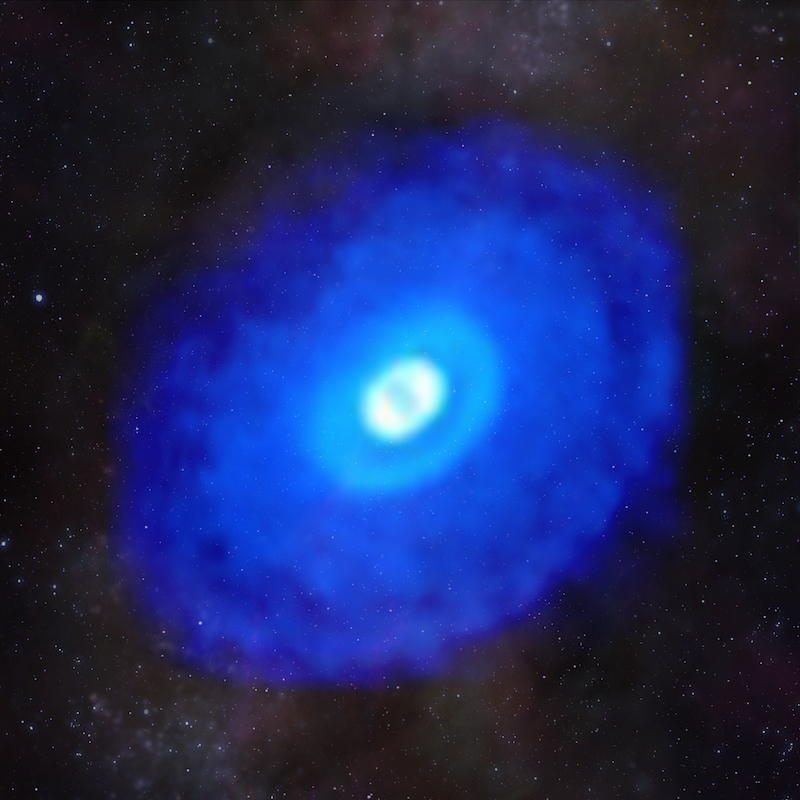
Planets are born in cosmic soups
Soup lovers know that there are many different kinds of soup, with a wide variety of tasty ingredients to make them unique. On September 15, 2021, astronomers at the Harvard-Smithsonian Center for Astrophysics (CfA) in Cambridge, Massachusetts, released new evidence related to the “cosmic soups” around stars, from which distant exoplanets form. These cosmic soups are the mix of chemicals in protoplanetary disks around the young stars. These disks are the birthplaces of planets. Astronomers have now mapped out the ingredients – the chemicals in five different protoplanetary disks – in extraordinary detail. They’ve found that, just as with the culinary favorites on Earth, no two cosmic soups are alike.
Astronomer Karin Öberg of CfA led the mapping project.
No fewer than 20 new peer-reviewed papers, collectively named “Molecules with ALMA at Planet-forming Scales (MAPS),” have been accepted for publication (pending) in the Astrophysical Journal Supplement. They are also currently available as preprint versions on arXiv (first 20 papers listed).

Implications for life
Specifically, the astronomers examined five different protoplanetary disks and found dozens of different organic molecules. Protoplanetary disks are massive disk-shaped clouds of gas and dust around young stars. In fact, it is in these disks that planets form. These soups of organic molecules are all different from each other and, consequently, can have implications for the possibility of life.
As Öberg said in a statement:
These planet-forming disks are teeming with organic molecules, some of which are implicated in the origins of life here on Earth. This is really exciting; the chemicals in each disk will ultimately affect the type of planets that form and determine whether or not the planets can host life.
Every soup is unique
The organic chemicals are not, however, spread uniformly through the disks. Instead, their locations are more random, meaning that each soup is unique with its own blend of ingredients. This suggests that planets can form in a wide variety of chemical environments. The location of a planet in the disk also makes a big difference, as Öberg explained:
Our maps reveal it matters a great deal where in a disk a planet forms. Many of the chemicals in the disks are organic, and the distribution of these organics varies dramatically within a particular disk. Two planets can form around the same star and have very different organic inventories, and therefore predispositions to life.

Our team used these maps to show where some of the forming planets are located within disks, enabling scientists to connect the observed chemical soups with the future compositions of specific planets.
Location, location, location
In total, the researchers mapped 18 different organic molecules in the protoplanetary disks. This includes hydrogen cyanide and other nitriles connected to the origins of life. The Maps III study that identified the specific locations of the molecules was led by CfA graduate student Charles Law. Law and his colleagues used the Atacama Large Millimeter/submillimeter Array (ALMA) in 2018 and 2019 to study the five protoplanetary disks.
Indeed, they were able to collect so much data that it took two years to analyze the results. A 100-terabyte hard drive was also required to store the data. The data was not only plentiful, it also held surprises, with Law noting that:
Understanding the chemistry occurring even in a single disk is much more complicated than we thought. Each individual disk appears quite different from the next one, with its own distinctive set of chemical substructures. The planets forming in these disks are going to experience very different chemical environments.

Looking for newborn planets
Richard Teague, a Submillimeter Array fellow at CfA, used the data and imagery collected by MAPS to hunt for newborn planets in the protoplanetary disks. They are hard to see directly, due to obscuring gas and dust. He said:
It’s like trying to see a fish underwater. We know they’re there, but we can’t peer that far down. We have to look for subtle signs on the surface of the water, like ripples and waves.
Despite that, the researchers got lucky. Teague analyzed gas velocities in two of the five protoplanetary disks. These disks were around the young stars HD 163296 and MWC 480. Correspondingly, they found small hiccups in velocity in certain portions of the disks, revealing a young Jupiter-like planet embedded in each of the disks.
As the planets grow, they will gradually carve out gaps in the disks, like other gaps that already exist and can be seen by telescopes. The upcoming James Webb Space Telescope should be able to spot the planets themselves, as Teague noted:
It should have the sensitivity to pinpoint the planets.
It will be interesting to see how many newborn planets the Webb finds and what ingredients are present in their individual soups.
Bottom line: Astronomers at the Center for Astrophysics | Harvard & Smithsonian (CfA) have found that planets are born in cosmic soups of organic molecules. These soups have different ingredients, leading to a wide diversity of planets.
Source (preprint): Molecules with ALMA at Planet-forming Scales











